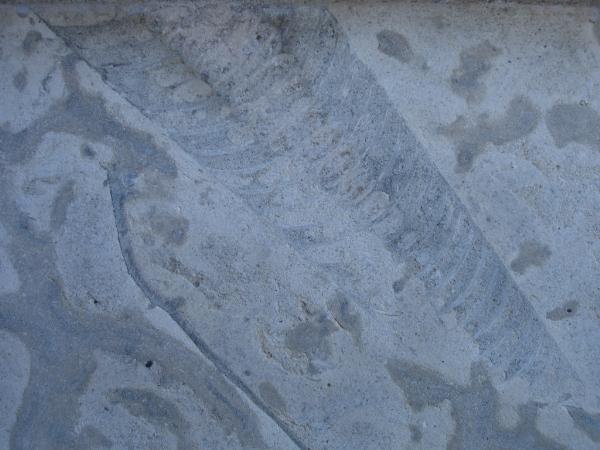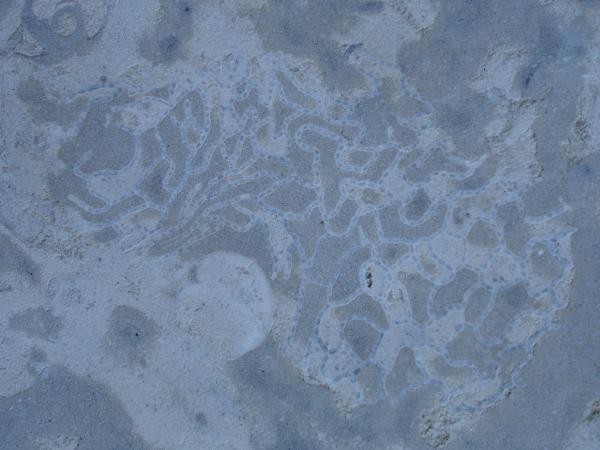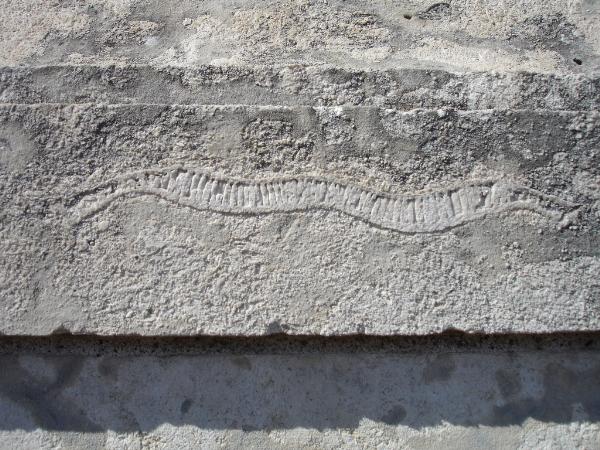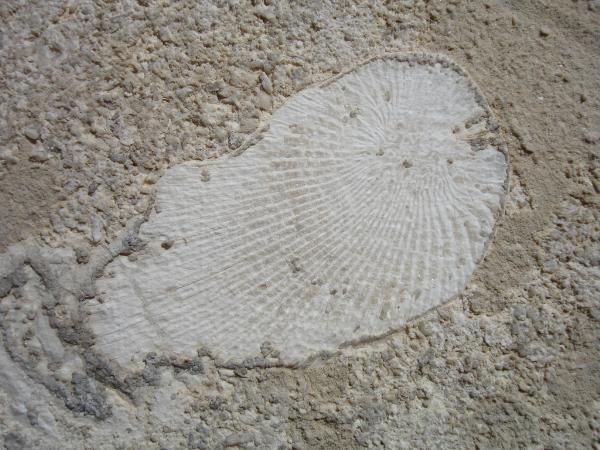Tyndall limestone is quarried from Garson, Manitoba and is used throughout Canada and the United States for it's beautiful, distinctively mottled pattern. It is sometimes referred to as tapestry stone. The rock is famous for its cream colour (limestone) with its pervasive coloured mottling (dolomite), caused by the burrowing of marine creatures when the limestone was deposited.
In geological terms Tyndall Stone is a widespread dolomitic limestone that formally belongs to the Selkirk Member of the Red River Formation. The formation is exposed in the Manitoba outcrop belt, and similar, correlative rocks are also known from the subsurface of Manitoba and Saskatchewan. Tyndall Stone occurs in the lower half of the Selkirk Member, which is 43 m thick. The Selkirk Member is overlain by evaporitic laminated, finely crystalline dolomite of the Fort Garry Member of the Red River Formation and it overlies calcareous dolomite and dolomitic limestone of the Cat Head Member of the Red River Formation.
 For many years, it was a mystery, as to what formed the mottled patterns in the stone. In the last two decades, however, Geologists have been able to study the Tyndall Stone and other similar stones and have determined that the mottled structure represents burrows made while the original sediment was still soft.
For many years, it was a mystery, as to what formed the mottled patterns in the stone. In the last two decades, however, Geologists have been able to study the Tyndall Stone and other similar stones and have determined that the mottled structure represents burrows made while the original sediment was still soft.
Burrows, along with tracks and trails, are types of traces left in a sediment by a variety of organisms, such as worms or crustaceans, as they forage for food, escape from predators, develop living shelters, travel, or simply rest on the sea floor. While the fossilised remains of some of these larger organisms can be found in the stone, paleontologists believe the burrows which make up the mottles in Tyndall stone were made by decapod crustaceans (e.g., lobsters, crabs), particularly thalassinid shrimp, such as Callianassa.
The question arises, then, why are the burrows a darker colour than the surrounding stone? In fact, why are they made of geologically different compositions, mineral calcite limestone and crystalline dolomite?
Burrowing must have occurred while the sediment was still relatively soft. The excavation made by the burrower would have been subsequently filled with sediment, either backfilled by the burrower, or piped-in after the burrow was abandoned. Thus, there developed a very slight porosity and permeability difference between the burrow fill and surrounding sediment, perhaps as a result of differences in particle size or sorting. In addition, there may have been slight differences in the amount of organic material incorporated in the burrow fill, maybe even from the burrower's fecal pellets, and the sediment hosting the burrow.
This difference was evidently adequate to allow the sediment hosting the burrows to become partially cemented while it was still just below shallow sea floor. In contrast, the burrow-fill sediment remained relatively uncemented.
Continued burial slowly transformed the burrowed sediment into rock. At a later stage in the burial history of the Tyndall Stone, perhaps when the evaporitic sediments of the overlying Fort Garry Member of the Red River Formation were being deposited, magnesium-rich brines infiltrated preferentially into the burrows because this part of the rock was still relatively permeable compared to the surrounding more lithified and less permeable rock. Dolomite was preferentially precipitated within the burrows, replacing the original calcareous sediment. The darker colour of the mottles could be the result of the oxidation of some of the iron that forms a trace constituent within the dolomite, or it might have resulted from the oxidation of dispersed pyrite (FeS2) that precipitated along with dolomite within the mottles.
Thanks to Mario Coniglio at the University of Waterloo
In addition to the dark and light patterns in the stone of the Port Arthur Courthouse, you will find fossilized remains of Gastropods, Tabulate and Rugose Corals (Grewingkia and Saffordophyllum,) Receptaculites (Fisherites,) Cephalopods (Nautiloids,) Catenipora and other creatures thought to have lived in the Ordovician period.






Photos of the various fossils in the Tyndall limestone at the Port Arthur Courthouse.
Requirements
To log this cache, you must learn to identify at least three different types of fossils found in the Tyndall stone at the Port Arthur Courthouse. To do this you must…
- Visit the Courthouse to find, identify and photograph at least three different types of fossils.
- Take a photo of yourself with your favourite fossil in the Courthouse Tyndall Stone.
- Post your fossil photos (three different types of fossils and you with a fossil) with your log but do not identify any photographed fossils in your log.
- Email me with the names of the types of fossils you have found, photographed and identified.
PS: If you think this cache deserves it, I'd sure appreciate if you gave it a Favourite Point.
